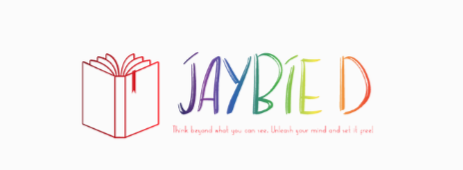
What to Look for in a Great Rhyming Picture Book
Share
Featuring: Rascally Reflection, Haunted House Day & Night by Jaybie D.
Not all rhyming picture books are created equal. While rhyme can be playful and engaging, poorly structured verse can quickly frustrate the reader and confuse the listener. So, what makes a rhyming picture book truly work? The answer lies in rhythm, pacing, clarity, and a deep understanding of how children process language aloud.
For parents, educators, and caregivers, knowing what to look for in a great rhyming book can make all the difference—both in how it sounds and how well it supports early literacy.

Why Rhyme Matters for Young Readers
Rhyme is more than a stylistic choice. When used well, it helps build phonemic awareness, memory, and verbal prediction—all foundational literacy skills. Rhyming books also tend to have built-in repetition and cadence, which support early vocabulary development and help children feel successful as they anticipate what comes next.
But for those benefits to land, the rhyme must be carefully crafted. A great rhyming book respects the reader’s ear. It avoids forced phrasing and awkward syntax. It sounds natural—like something you’d actually say, even if you never would have thought to say it that way.

Clarity and Flow Over Cleverness
One common pitfall in rhyming picture books is prioritizing clever wordplay over clarity. If a child doesn’t understand the sentence or an adult keeps stumbling over it, the experience suffers. The best rhyming books maintain meaning and rhythm at the same time.
In Rascally Reflection, for example, the rhyme carries the emotional arc. The cadence builds a sense of internal tension, mirroring the girl’s self-talk, while also offering a lyrical structure that helps even complex feelings feel accessible. The rhyme isn’t ornamental—it’s functional, guiding the reader and reinforcing the message.

Similarly, Haunted House Day & Night uses rhyme to create momentum and mood. The rhythm helps pace the journey through each room, while the rhyme softens the spooky tone. It becomes a gentle invitation to observe, compare, and look again—making it ideal for younger audiences who are just beginning to explore books with atmosphere.

Room for Rich Vocabulary
While rhythm and clarity are key, that doesn’t mean rhyming books should avoid big or unfamiliar words. In fact, challenging vocabulary can be a welcome addition—especially in picture books, which are so often read aloud.
Because an adult is usually guiding the reading experience, children are free to listen, ask questions, and absorb new words without the pressure of decoding everything themselves. This creates space for language growth while still honoring the natural rhythm of the story.
Well-placed “stretch” or sound words can spark curiosity, invite discussion, and build confidence—all without compromising the joy of rhyme.

Page Turns and Predictability
A well-crafted rhyming book is written with the page turn in mind. Anticipation is part of the magic, and it’s often built by rhymes that lead into the next idea, line, or scene. Children love guessing the final word in a rhyming couplet, especially when the story sets them up to be right. This call-and-response dynamic is part of what makes rhyming books so re-readable.

Books that drag the rhyme across too many lines, or interrupt the rhythm with long asides or complex phrasing, can lose that sense of timing. The best books know when to pause, when to surprise, and when to let the rhyme carry the emotional beat.
Illustrations and Rhyme Working Together
Rhyme works best when it’s paired with clear visual storytelling. In both Rascally Reflection and Haunted House Day & Night, the illustrations reinforce the meaning of the words and vice versa. The visual cues help readers decode unfamiliar vocabulary and stay grounded in the story, even as the language plays with structure.
This interplay between text and image is especially important in rhyming books, where a single misaligned visual can derail the rhythm or confuse the reader. Great rhyming picture books use illustrations to anchor and amplify the story being told aloud.

What to Watch For When Selecting a Rhyming Book
When browsing new titles or evaluating a book for your classroom, storytime, or bookshelf, consider these key questions:
Does the rhyme sound natural when read aloud?
Is the rhythm consistent and easy to follow?
Do the illustrations support the pacing and flow?
Is the story clear and emotionally engaging?
Does the rhyme serve the content—or distract from it?
Books that pass these tests tend to become instant favorites—read again and again by eager kids and willing adults alike.

Why It’s Worth Being Selective
A great rhyming picture book doesn’t just rhyme. It sings. It invites interaction, builds confidence, and creates shared joy in language. It helps children fall in love with the sound of words—and the magic of reading together.
To learn more about these books and others, including access to free lesson plans, downloads and more, visit: HERE.

